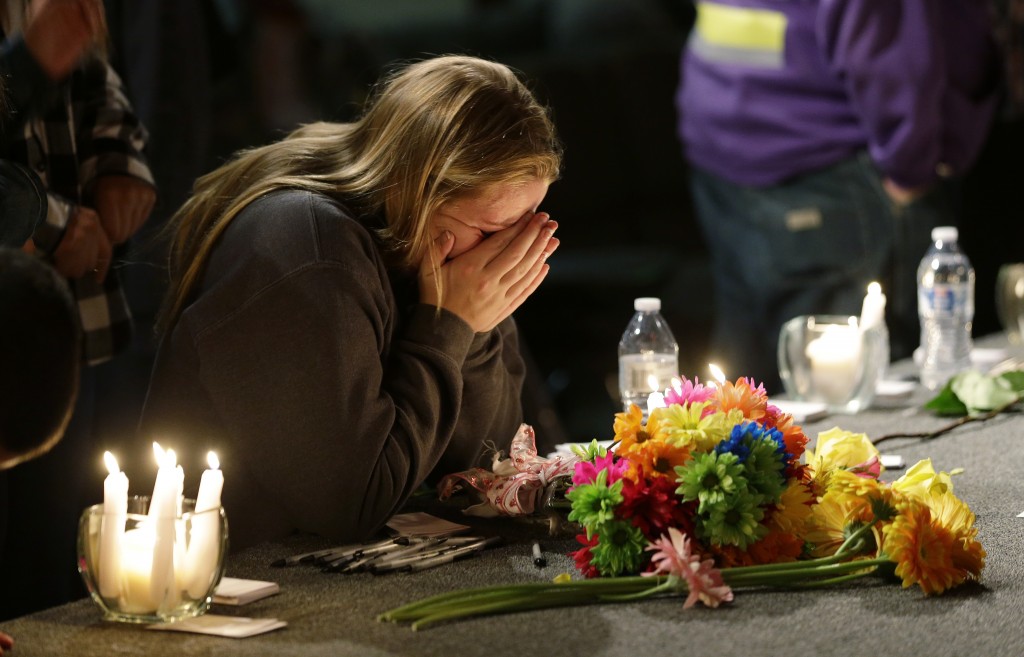
Recent gun-related incidents add fuel to the ongoing national debate over the presence of firearms on school campuses.
Earlier this month, Canadian-American feminist, media critic and blogger Anita Sarkeesian received several anonymous online threats related to a speech she was scheduled to give on Oct. 15 at Utah State University. After the school told her it would not be screening for guns at the venue, she decided to cancel the event.
To reiterate: USU & Utah police refused to do any type of search whatsoever to determine if someone was bringing a firearm into my event.
— Feminist Frequency (@femfreq) Oct. 15, 2014
A firestorm erupted online over the USU incident; however, Utah Sen. Curtis Bramble (R-Utah and Wasatch Counties) said he “didn’t see any controversy at all.”
“The policy in Utah has been very clear about the right to bear arms,” Bramble said.
An Oct. 14 USU news update invoking Utah law stated the following:
“Sarkeesian was informed that, in accordance with the State of Utah law regarding the carrying of firearms, if a person has a valid concealed firearm permit and is carrying a weapon, they are permitted to have it at the venue.”
Bramble said a public institution’s policies do not supersede the state constitution. According to Bramble, a professor or student with the proper licenses has the constitutional right, as stated by the legislature, to carry a firearm at a public institution.
He also noted the serious challenge of finding a balance between constitutional rights and public safety, but he believes stricter rules do not deter assailants.
“If you create gun-free zones then the only ones that will have guns are those that want to do harm,” Bramble said.
Bramble also made sure to make a distinction between public and private institutions like BYU, which has authority to create its own gun regulations.
Not everyone agrees that an increased number of law-abiding weapon-carriers will translate into higher safety.
BYU Police Lt. Arnold Lemmon said he believes the current policy banning all guns on campus enhances safety and that it would not be beneficial for individuals to carry guns on campus.
“The majority of civilians do not have the skill set and legal knowledge relative to the use of deadly force,” Lemmon said.
To get a concealed carry permit in Utah, one must simply apply, pass a background check, pay a $41 (for residents) or $51 (non-resident) fee and complete a minimum of four hours of firearm training. Even with a permit, people are not allowed to carry guns on the BYU campus.
According to the BYU Firearms and Weapons Policy, “Firearms and weapons are not permitted, concealed or not concealed, with or without a concealed weapon permit, while upon properties owned or controlled by the University (including on-campus housing), without specific written permission from the Chief of University Police.”
As citizens, politicians and pundits across the country debate questions over gun rights and gun control, in Utah there is support for guns on school campuses. Last year the Republican-led Utah State Legislature passed a bill that would have allowed people to carry a concealed firearm without a permit. Gov. Gary Herbert vetoed the bill.
One Utah group trying to improve gun safety measures is Utah Parents Against Gun Violence. The group supports the right of law-abiding citizens to own guns but is against teachers carrying guns on campus.
“We believe it encourages vigilantism and generally puts people at increased danger, especially considering the minimal training requirements to get a concealed carry permit here,” said Miriam Walkingshaw, president of Utah Parents Against Gun Violence.
With regard to finding solutions to the controversy, Walkingshaw said the group is willing to work with others to provide a safer environment for students.
“Given the gun-friendly climate here, we may consider supporting legislation that would require an increase in the training requirement for teachers,” she said.
Utah has not had a fatal school shooting incident in more than two decades, and legal gun carriers may continue to arm themselves on Utah’s public campuses.
At a glance: U.S. school shootings (information from Wikipedia)
More than 100 incidents have resulted in more than 175 deaths and more than 100 injuries since 2000. Here are a select few:
Date Location Deaths Wounded
Oct. 28, 2002 University of Arizona 4 0
Mar. 21, 2005 Red Lake High School (MN) 8 7
April 16, 2007 Virginia Tech University 33 25
Feb. 14, 2008 Northern Illinois University 6 21
Feb. 12, 2010 University of Alabama (Huntsville) 3 3
Feb. 27, 2012 Chardon High School (OH) 3 3
April 2, 2012 Oikos University (CA) 7 3
Dec. 14, 2012 Sandy Hook Elementary (CT) 28 2
Oct. 24, 2014 Marysville-Pilchuck High School (WA) 3 3




